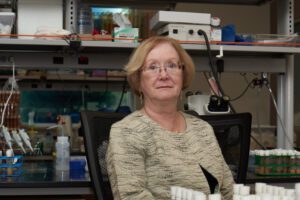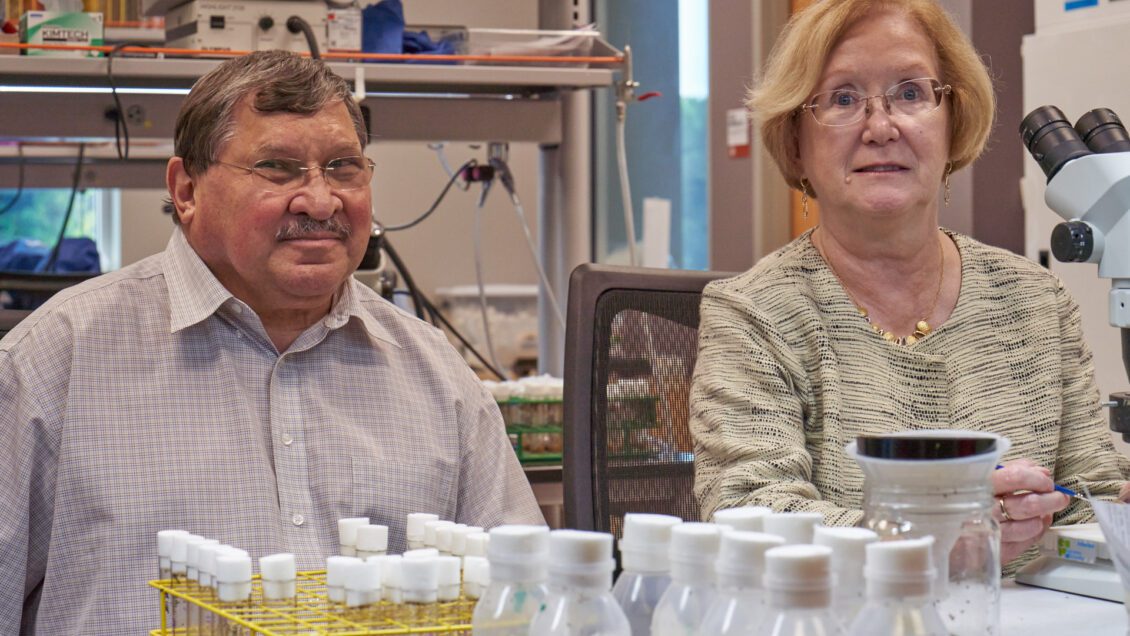A pair of genetics researchers from Clemson University are shedding light on some complex and often neglected aspects of human genetic traits that are critical for personalized medicine.
In a newly published review paper on pleiotropy and epistasis, authors Trudy Mackay and Robert Anholt provide “an integrative, complete picture of those two major aspects of genetic architecture of complex traits that are essential in the future for being able to develop precision medicine,” Anholt said.
How a single gene can affect multiple traits
Pleiotropy is the phenomenon where a single gene affects multiple traits.
In recent decades, pleiotropy has been identified in humans through the development of sophisticated genome-wide association studies.

These studies have found “really interesting associations — many of them in psychiatric genetics,” said Mackay, who is director of the Clemson University Center for Human Genetics in Greenwood and the Self Family endowed chair of Human Genetics.
Research showing shared features of genetic architecture between disorders such as schizophrenia, bipolar disorder and Parkinson’s disease provides new biological insight into potential common disease processes, according to the article by Mackay and Anholt.
Laboratory testing also has found pleiotropy to be prevalent in model organisms, such as fruit flies, mice, roundworms and yeast.
Baldness is an example of epistasis
Epistasis, which means non-additive gene-gene interactions, occurs when the expression of one gene is modified by one or more other genes. A frequently cited example is how a baldness gene can affect men with genes for either blonde hair or red hair.
Mackay said researchers can frequently identify epistasis while conducting laboratory experiments on fruit flies or other model organisms.
“It turns out pretty much anytime we look in model organisms, we find these epistatic interactions,” she said.
New approaches needed to address past limitations
But epistasis is rarely observed for human quantitative traits and common diseases. Anholt, Provost Distinguished Professor of Genetics and Biochemistry and director of faculty excellence for the College of Science, said he hopes their article will lead to new approaches to address what he sees as limitations in previous medical studies.

On too many occasions, he said, researchers naively concluded that the effects of many individual genes can be added together to understand the genetic risk for maladies such as diabetes or cardiovascular disease.
“They have ignored the presence of epistasis,” he said. “We have to think in terms of interacting genetic networks rather than genes acting individually.”
Challenges to overcome
There are some known instances of epistasis in humans, Mackay said, citing studies of rare diseases in children. Children with identical genetic defects will still differ in the age of disease onset and severity.
“This is really, really important because if we knew what those buffering genes were, they could be made into drug targets that could help patients with the rare disease,” Mackay said.
Unfortunately, a lack of information on these rare diseases prevents progress, she said.
In contrast, an overwhelming amount of potential data complicates the search for epistasis in more common diseases.
“It’s just a very difficult mathematical and statistical problem when you have a million variants that you’re testing,” she said. “We suggest in the review some tricks that can be used to reanalyze these data to identify epistasis.”
The article states that inferences about the architecture of quantitative traits in model organisms such as fruit flies are likely applicable to humans. It also suggests the possibility that pleiotropy and epistasis could be functionally related.
“The purpose of the paper is to raise awareness among the human genetics community that this is an important aspect that should be considered going forward,” Mackay said.
In addition to more precise medical therapies, a better understanding of pleiotropy and epistasis could have important benefits for agricultural crops and the broader study of evolution.
“Pleiotropy, epistasis, and the genetic architecture of quantitative traits” appeared in the April edition of Nature Reviews Genetics.
Get in touch and we will connect you with the author or another expert.
Or email us at news@clemson.edu

